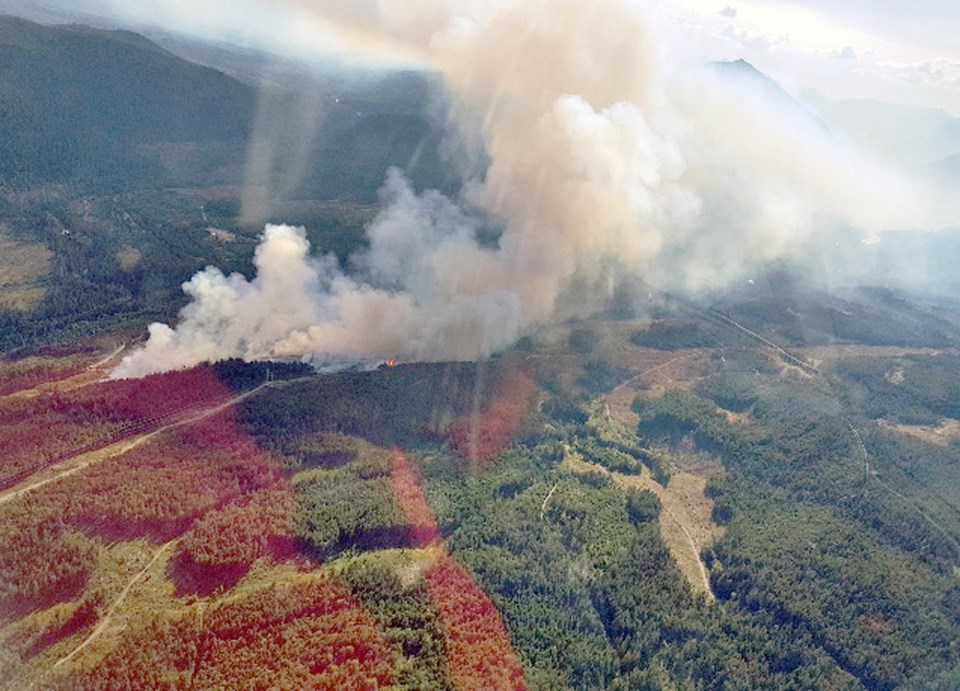For the second straight year, the B.C. government has declared a state of emergency as hundreds of wildfires burn across the province — including more than 40 on northern Vancouver Island.
The move allows the province to control access to fire zones, deploy police officers to assist with evacuations, and requisition municipal firefighters and equipment to protect homes and businesses.
There were 559 fires burning across the province Wednesday with more than 3,000 people affected by evacuation orders, the province said.
With the fire situation expected to worsen as hot, dry weather persists, the state of emergency ensures the province will have access to all the resources it needs to keep people safe, said Mike Farnworth, solicitor general and minister of public safety.
As part of that response, fire departments across the capital region have dispatched crews and equipment to Fort St. James to help protect homes and businesses in one of the hardest- hit regions of the province.
Victoria Fire Chief Paul Bruce said he received a request for help Tuesday afternoon and dispatched six people, a truck and a water tanker early Wednesday morning.
“Whenever they’re reaching out to the Island for additional resources to travel — especially a distance like that — you know it’s pretty serious,” he said.
“We just get together and utilize all available staffing.”
Bruce said the deployment will have no effect on the department’s ability to respond to local fires. If anything major happens, the department can always ask neighbouring municipalities for help, he said,
Saanich, Esquimalt, Langford, Sooke, Metchosin, View Royal, Central Saanich, Sidney and North Saanich have all deployed personnel or equipment to assist the wildfire effort, their departments confirmed Wednesday.
“The great thing is that we’re all talking with one another,“ said Langford Fire Chief Chris Aubrey. “It’s a great way to be able to go and help out those in need, but also make sure that we’ve still got the resources here.”
The state of emergency will remain in effect for 14 days, but can be extended or rescinded if necessary.
In 2017, the state of emergency lasted for 10 weeks from July 7 to Sept. 15.
“The key difference is that the fires we were managing in 2017 were massive in scale — hundreds of thousands of hectares in size, whereas this year we’re seeing more fires, but generally they haven’t been reaching those huge magnitudes,” said Kevin Skrepnek, B.C.’s chief fire information officer.
“The largest fire in the province right now is that Shovel Lake fire burning west of Fort St. James and that fire is currently estimated at a little over 50,000 hectares in size.”
The province has spent $214 million battling the fires to date, compared to $332 million at this point last year. There were also thousands more people removed by this time in 2017, Skrepnek said.
“So we haven’t reached that scale yet, but certainly given the number of fires that we have going on right now, given the fire activity that we’re seeing out there, and given the fact that we really see no relief in sight from the weather, there’s definitely potential this season’s going to get worse before it gets better,” he said.
“I think that’s fed into the rationale for why the provincial state of emergency was declared.”
Skrepnek said it will take heavy rainfall all across the province to alleviate the situation.
“We’re going to throw everything we’ve got at these fires,” he said.
“But, in a lot of cases, Mother Nature’s going to be in the driver’s seat.”
The B.C. Wildfire Service said 44 fires were burning on Vancouver Island Wednesday north of the highway from Campbell River to Gold River.
The service has deployed 15 firefighters, three helicopters and two pieces of heavy equipment to battle an 80-hectare fire at Pinder Creek near the main road to Zeballos.
Helicopters were dropping water on a seven-hectare fire in steep terrain overlooking Zeballos, while 13 firefighters and a helicopter were battling the eight-hectare Head Bay fire near the road to Tahsis.



